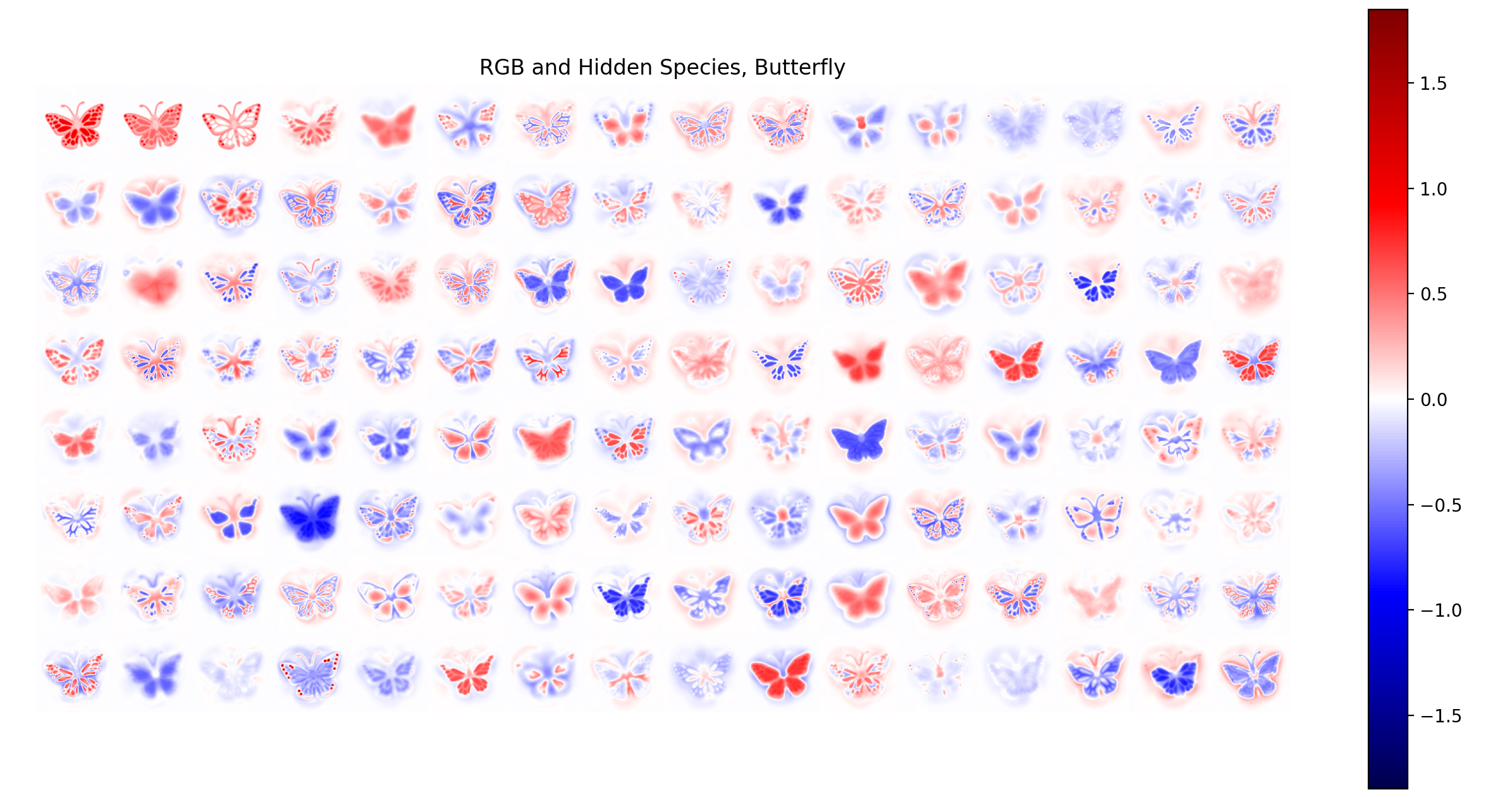
Projects
Parameterized Reaction-Diffusion Chemical Reaction Networks
PI: Erik Winfree (Division of Engineering and Applied Science and Division of Biology and Biological Engineering)
SASE: Inhoo Lee, Scholar
Inspired by recent work in machine learning [1], the Winfree Group is studying pattern formation in reaction-diffusion systems and have shown that certain Chemical Reaction Networks (CRNs) which behave as multistable neural networks in the well-mixed setting are capable of growing into arbitrary target shapes in the reaction-diffusion setting. To do this, CRNs are simulated in a differentiable programming framework that uses backpropagation-through-time to optimise their parameters (reaction rates, diffusion constants) and to achieve the goal of an accurate fit of the formed spatial pattern to the target pattern. The group hypothesizes that many CRNs have this capability and have plans to demonstrate this behavior. Further research goals include demonstrating programmable pattern formation in an experimental setting, which would require simulating and training CRNs with plausible molecular implementations.
In collaboration with the Schmidt Academy, the group aims to develop software that: a. Takes a general description of the CRN (e.g. of an indexed neural unit), and b. Converts that description to ODEs using mass-action or Michaelis-Menten kinetics. Next, it should c. Find an efficient matrix representation of the ODEs. This will be made possible using an indexed notation for the reactions, which should be more efficient than specifying a CRN reaction-by-reaction. Finally, it should d. Solve the corresponding PDE in the reaction-diffusion setting in a differentiable programming framework.

Trained CRN can reproduce the target pattern, a butterfly.
The principle goal of the project is to automate the process of compiling a reaction-diffusion simulation to a deep neural network where each layer represents a single time step of Euler or Runge-Kutta integration of the PDE, as currently accomplished in manually-coded computations. Time permitting, the Scholar will employ more sophisticated numerical techniques such as spectral methods to find spatial gradients while integrating with implicit-explicit methods. These solvers are not differentiable, however. Additionally, the solver could be extended to work with related physical systems that are efficiently solved using spectral methods, such as liquid-liquid phase separation with the Cahn-Hilliard energy function [2]. Current research in the Winfree lab is studying pattern formation in programmable DNA liquids; the lab has already manually coded PDE computations for such systems in the TensorFlow and JAX frameworks, so generalizing this work would be a natural next step for the project.
[1] Alexander Mordvintsev, Ettore Randazzo, Eyvind Niklasson, and Michael Levin. Growing neural cellular automata. Distill, 5(2):e23, 2020.
[2] Sheng Mao, Derek Kuldinow, Mikko P. Haataja, and Andrej Koˇsmrlj. Phase behavior and morphology of multicomponent liquid mixtures. Soft Matter, 15(6):1297–1311, 2019. (edited)